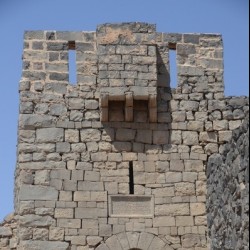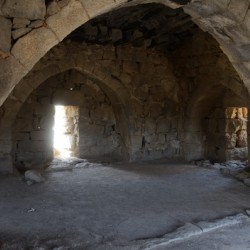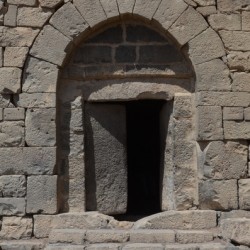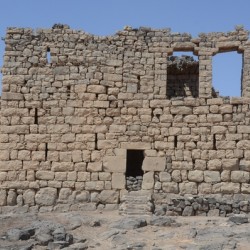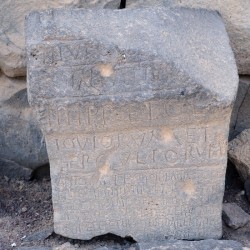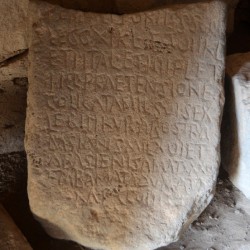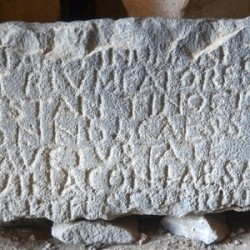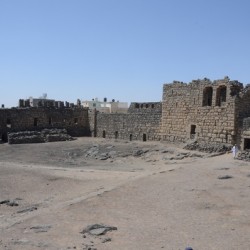Basienis (Qasr el-Azraq)
Q2426928Basienis: Roman fort in the Arabian Desert, modern Qasr el-Azraq in Jordan.

Azraq is an oasis in the desert of what is now Jordan, about eighty kilometers east of Amman. There used to be lake, Ain el-Assad, "the lion's well". Human occupation appears to have started as early as the Neolithic Age.
The oasis is at the source of the Wadi Sirhan, a watercourse that was used by Arab tribes to attack the Roman province of Arabia Nabataea. In c. 200 CE, the Roman emperor Septimius Severus decided to block this incursion road by building three forts, about fifteen kilometers apart: Qasr el-Azraq, Qasr el-Useikhin (to the northeast of Azraq) and Qasr el-Uweinid (to the southwest). The occupation of an oasis in the desert to protect the cities of the Empire, has a parallel in the Limes Tripolitanus, which was created at exactly the same time.
Hardly any traces of the Severan fort at Qasr el-Azraq survive, but there is an interesting inscription that mentions road construction work during the reign of Aurelian, which can be dated to 273. No less than five legions were involved: I Illyricorum, I Italica, IIII Flavia, VII Claudia, and XI Claudia.
The present fort, which used to be called Basienis, is built on foundations from the age of the emperors Diocletian and Maximian (c.300 CE). There is a dedication to the Invincible Sun by the two emperors. Another inscription documents repairs during the reign of Constantine the Great and two of his sons. This text can be dated between 324 and 333. Sherds prove that the fort remained in use until the end of the fourth century.
The walls of the rooms surrounding the court are medieval, although the black stones are ancient. In the eighth century, the Umayyad crown prince Walid II used the ancient fort as a residence when he went hunting near the lake. He may have built the mosque in the center of the court. An Ayyubid inscription in the southern gate of the fort is dated to 634 AH = 1237 CE. In the Ottoman age, the fort was used to protect the road to Mecca. Lawrence of Arabia, who stayed here in 1917/1918, mentions the stone door in the south gate. The latest military users of the fort were the Druze in the 1930s.
